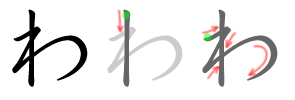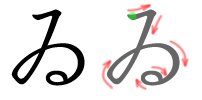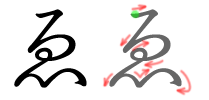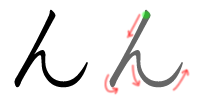The consonant for this column is W, however like the Y column this group does not use all of the vowels—there is no kana for WU in Japanese.1
- わ [WA]
- ゐ [WI]
- ゑ [WE]
- を [WO]
Since it sits alone at the far right end of the table, we’re also going to include the terminal N in this group:
- ん [N]
This group is…special.
わ WA functions like any other character.
Modern Japanese doesn’t use WI ゐ or WE ゑ anymore, however, and replaces them with い I and え E wherever they would formerly have appeared. Similarly, を WO used to be used for spelling words, but in modern Japanese is only used as the direct object particle (a topic for another time). Where を WO used to appear in old words it has since been replaced with お O (e.g. Man をとこ [wo to ko] became おとこ [o to ko] and Woman をんな [wo n na] became おんな [o n na]).
ん N is a special character in that it is the only consonant on the table that is not explicitly paired with a vowel (this, in spite of its appearing in the A row of the table). It is used to add an N to the end of a syllable (e.g. た = ta, たん = tan). If you ever have to read it on its own it’s pronounced like the “oon” in “soon”.
The good news is that this means that there are only three characters from the group you have to learn; the others are just a bonus.
How to Write
For reference, here is a quick review of the general rules for stroke order:
- All characters should fill a square of about the same size
- Top to bottom, left to right
- Horizontal strokes before vertical strokes that intersect them
Vocabulary Practice
The following words can be written using only the characters we have covered so far. Once you’ve practiced reading them a couple of times, try writing them on a piece of paper without looking and see how well you do.
- を [wo] Direct object marker particle
- わんわん [wa n wa n] Sound of a dog barking
- わかる [wa ka ru ] to understand
- さん [sa n] polite suffix added after names
Onward!
When you’re ready, click here to move on to Group 11: Dakuten!





